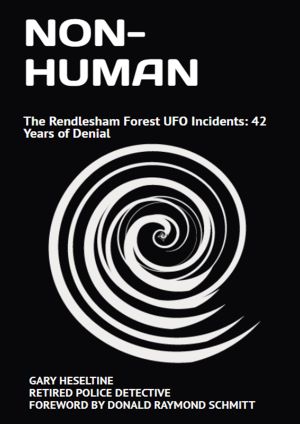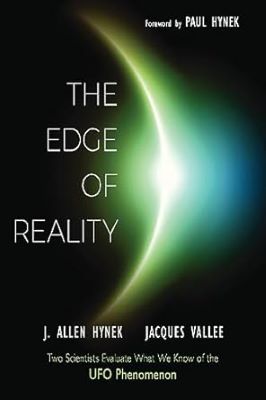
Book Review: Hynek and Vallée's The Edge of Reality

The Edge of Reality
Publisher: Red Wheel / Weiser
Publication date: 11/06/2023
Pages: 236
The Edge of Reality was originally released in 1976. In preparation for this review, I sought out a copy of the original release for comparison purposes. Sadly, only a couple of used copies were available on Amazon for prices well in excess of $100.
Fortunately, the publisher has seen fit to reissue the book making it available to a new generation of people interested in the UFO phenomenon. Having not previously read the book myself, I take the time to review it here.
The immediate question is whether a nearly 50 year old book is worth your time. It’s certainly possible. Vallee’s Passport to Magonia and The Invisible College were both written in the 1970s and remain important reading on the path to understanding the UAP phenomenon. The Edge of Reality is an enlightening entrant from the same era.
The book takes the form of conversations between Hynek and Vallée, occasionally facilitated by Dr. Author Hastings, a psychologist and mutual friend. The conversations are sometimes prefaced by a description of a particular UFO case that serves as the basis for the conversation.
One of the best values that the book brings for me is insight into Hynek and his activities. Hynek is less well published than Vallée, so commentary directly from him was educational, including:
- The first-person account of his Project Blue Book years and his evolution in thinking on the UAP topic.
- His understanding of how Project Blue Book was managed inside the Air Force: A low priority, amateurly run project, of interest to few within the Air Force. “Sloppy, just kid stuff.”
- His recount of the famous “swamp gas” incident of 1966, how it was handled and how the whole notion of swamp gas became involved in the case. This is the moment, according to Hynek, when he finally decided he had had enough of Project Blue Book.
Another point that jumps out after reading the book during the current era, is that progress on this topic is wholly dependent then and now on engaging the scientific community. Again and again, Hynek and Vallée speak on the need for one or several scientists to speak up in order to progress. They talk about the continual discrediting of the topic keeping the scientific community away. They conclude that engagement by the scientific community is the way forward.
Hynek and Vallée express skepticism of a cover up by the government. It’s difficult to understand this stance given Hynek’s exposure to projects, Sign, Grudge and Blue Book. They put it more on incompetence, lack of interest, or passing the buck between various government entities such as the Air Force, the CIA, and others.
The book highlights how well evolved our knowledge of the phenomenon was 50 years ago. By 1975, Fort, Keel and Vallée have given us an understanding of the high strangeness aspect of the phenomenon, Vallée has given us the control system hypothesis, Keel and others had moved on from the extraterrestrial hypothesis. It leads to a cascade of questions: Has it taken until recent years to disseminate this thinking more fully? Did our progress researching the phenomenon stagnate over decades? How was the research community held at bay?
50 years ago, The Edge of Reality showed us what we know again today: Future scientific research holds the answers to the UAP phenomenon. The push in this era is towards just that. Avi Loeb’s Galileo Project and Gary Nolan’s Sol Foundation are the way forward. Has our inability to engage the scientific community cost us 50 years in our quest to understand the UAP phenomenon? Can this era accomplish what Hynek and Vallée called for decades ago and engage the scientific community? Time will tell.
